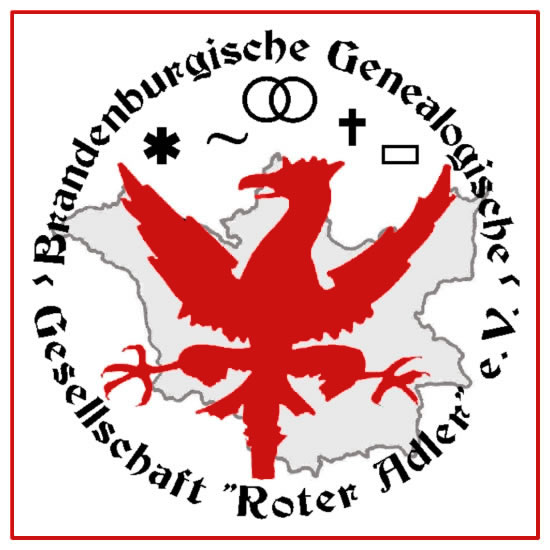The history of settlement in the Mark Brandenburg
The settlements of the knights who settled in the Mark are today’s manors, which for the most part form independent manor districts. The colonists were settled in the old Wendish villages or in new foundations. These were established at a spring, pond or lake in the middle of the communal land and were named after the entrepreneur (e.g. Heinrichsdorf), after the surrounding area (Buchholz), after the abandoned homeland (Mansfeld), and so on. For the hereditarily transferred land, the immigrants had to pay an inheritance interest (Schuld, Middle High German schult) to the sovereign, which was collected by the entrepreneur, the “Schultheißen” (“Mayor”); in the beginning, however, they usually remained exempt from him for 3-5 years, and probably also received advance travel money and seed grain. If they had to clear forest, they were given virgates of twice the size and 16 years’ exemption; the villages that arose here are still recognisable today by their names, which end in “walde” or “hagen”. The Mayor received a larger estate and was free of the hereditary rent and the sheaf and meat tithe to be paid to the church; in return, he was obliged to provide the Margrave with a horse for the event of war and to go into the field himself as a lightly armed horseman. Since he actually only owned his estate as a fief, he was also called fief mayor. His duties also included the lower courts and the village and field police.
As a rule, the villages had two straight streets which converged at an acute angle at the ends and enclosed the church, churchyard and village pond in the middle. The houses were given the shape that the settlers had learned in their homeland. Thus, in the north-western part of the Mark, as far as the Uckermark, and south as far as the Havel and Spree, the Saxon house spread, while in the south-west the a href=”wp-content/uploads/2010/11/frankhof.jpg” target=”_blank” rel=”noopener noreferrer”>Frankish farmstead was used. The Wends, who have remained unmixed in the southeastern part until our time, created a farmstead form that is quite similar to the Frankish one. Finally, in the north-east, the settlers followed the existing forms, and the East German house came into being. The hardship of the times often forced the builders to make do with simplified structures. This had a particular effect on the Franconian farmstead; it then appeared as a dwelling house with the long side facing the village street, to which a parallel stable and barn building was added behind.
Many of the former villages were destroyed in the battles of the Brandenburg princes with the Pomeranians and Poles; others fell victim to the Hussites or became desolate and decayed due to the plague. The Thirty Years’ War was the most terrible among them. After it, Brandenburg resembled a wasteland in many places; for miles there were neither people nor domestic animals. The former fields were covered with forest. Such ruined villages are still remembered today by the field marks, which are called “Dorfstellen” and “Wüstemarken” (near Belzig alone 65), as well as the “deserted churches”, which can be found here and there in ruins in the open countryside, e.g. in the Uckermark and near Drehna.
Monasteries were also founded in large numbers during the Germanisation of the Mark. The oldest of these belonged to the Premonstratensians. The most important monasteries, however, were those of the Cistercians, who worked “with the cross in their left hand, with axe and spade in their right, teaching and farming, educating and sanctifying”, and who left behind magnificent architectural monuments in their churches. The monasteries of the Franciscans (“grey monks”), Dominicans (“black brothers”) and Augustinians were founded in the towns. They were abolished after the introduction of the Reformation. …
Most of the towns in the Mark were founded between 1220 and 1300. Many emerged from Wendish villages, others were built around a castle or a monastery, some were newly founded. They were intended to be centres of transport and places of refuge for the settlers. Here, too, the settlers were assigned certain plots of land; here, too, the margravial bailiff exercised the lower jurisdiction and the police, just as the fief mayor did in the village. Later, these rights were transferred to the council, which consisted of mayors (consuls) and councillors (senators). To protect them against enemies, they were surrounded by walls, ramparts and moats. They were granted certain rights by the sovereign, as a sign of which some erected a Roland. The inhabitants were allowed to engage in trade and commerce and to unite in guilds; above all, the towns had the right to hold markets.
The form of the dwellings was based on the farmhouse types. However, mixed forms also developed, which were connected to the Saxon by the gable entrance and to the Franconian by the farmyard, to which the simplified Franconian courtyard system with the longitudinal front on the street, which prevails today, was added later. Standing close together, they formed rectangular quarters, between which roads led to the gates and the market square. On the latter stood the usually stately and ornate town hall with the common sales halls of the guilds, the Scharren. Other open spaces were occupied by churches, many of which still arouse our admiration. In front of the gates, hospitals were built for the wanderers, dedicated to their patron saint, St. Gertrude, and for those afflicted with contagious diseases, named after St. George, the patron saint of the crusaders who brought leprosy to Germany. The criminals were executed on the gallows hills. ….
In the 16th century, the towns ceased to be fortified strongholds; the protection of the Mark was transferred to the provincial fortresses. Since then, the walls in many places have fallen into disrepair.
Source: Beuermann/Heinze: Landeskunde Preußens: Die Provinz Brandenburg, Verlag Spemann, Berlin & Stuttgart 1901
